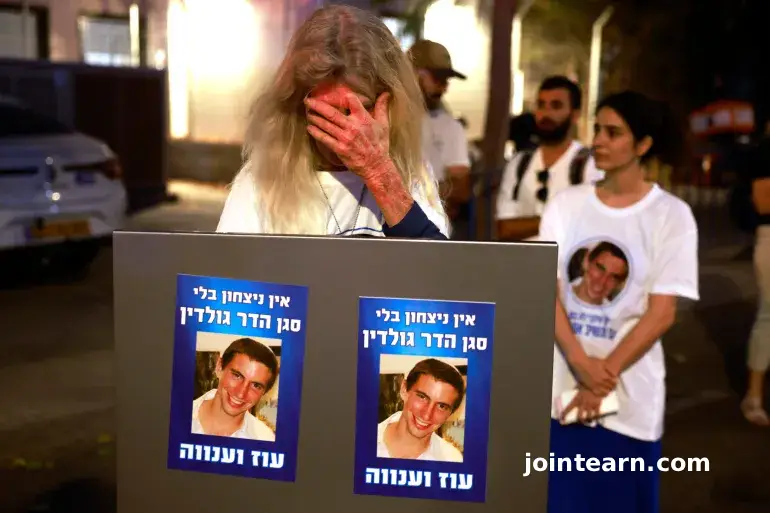
Israel has received the remains of Lieutenant Hadar Goldin, a soldier killed during the 2014 Gaza conflict, marking a significant moment for both his family and the Israeli military. Goldin, who was 23 at the time of his death, was killed in an ambush by Hamas fighters during the last major ground offensive in Gaza, known as Operation Protective Edge.
Prime Minister Benjamin Netanyahu’s office confirmed on November 9, 2025, that the body was handed over to Israeli forces in Gaza by the International Committee of the Red Cross (ICRC) after being transferred by Hamas. Formal identification was completed by Israeli forensic teams, providing long-awaited closure to Goldin’s family.
At a weekly cabinet meeting, Netanyahu acknowledged the prolonged agony caused by the delay, saying, “This will now allow his family to give him a Jewish burial.” He also described Goldin’s death as heroic, noting, “Lieutenant Hadar Goldin fell in heroic combat during Operation Protective Edge.”
Details of the Soldier’s Death and Recovery
Hadar Goldin was killed on August 1, 2014, just two hours after a ceasefire had taken effect to end the six-week war between Israel and Hamas. He was part of an Israeli unit assigned to locate and destroy Hamas tunnels, a mission that exposed him to extreme risk.
The Qassam Brigades, Hamas’s military wing, stated that Goldin’s body was retrieved from a tunnel in the Yebna refugee camp in Rafah, southern Gaza. This retrieval comes amid a larger effort under the October 2025 ceasefire agreement to return the remains of deceased soldiers and captives.
Another Israeli soldier, Oron Shaul, who was also killed during the 2014 conflict, had his remains returned earlier this year. Under the current ceasefire terms, four more deceased Israeli captives remain in Gaza awaiting repatriation. Hamas has also released 20 living captives and 24 bodies as part of ongoing prisoner exchanges.
Prisoner Exchanges and Wider Implications
For each body returned, Israel has released the remains of 15 Palestinians, reflecting a sensitive and complex process of reciprocal humanitarian gestures. According to Ahmed Dheir, director of forensic medicine at the Nasser Medical Complex in Khan Younis, Gaza, a total of 300 bodies have been returned to date, with 89 officially identified.
Alongside the body repatriation, Israel has also released nearly 2,000 living Palestinian prisoners since the ceasefire on October 10, 2025, though Palestinian authorities report that over 10,000 people remain in Israeli detention.
Continuing Violence in Gaza and the West Bank
Despite the truce, violence in Gaza and the occupied West Bank continues. The Gaza Ministry of Health reported 241 Palestinians killed and 619 wounded since the ceasefire began, while 528 bodies have been recovered from rubble and conflict sites.
Israel’s military operations are ongoing, with recent casualties including one man killed in the Bureij refugee camp in central Gaza and two others in separate assaults in northern and southern Gaza. In the West Bank, Israeli forces killed a Palestinian man in the Far’a refugee camp near Tubas, while settlers attacked Palestinian farmers in several regions.
The October 7, 2023 Hamas attacks on southern Israel led to 251 people being captured and at least 1,139 killed, prompting Israel’s subsequent military campaign in Gaza. According to the Health Ministry, the conflict has resulted in 68,875 Palestinian deaths and 170,679 injuries, underlining the ongoing humanitarian and political crisis.
The Significance of the Remains’ Return
The handover of Lieutenant Hadar Goldin’s remains represents both a humanitarian milestone and a stark reminder of the unresolved tensions between Israel and Hamas. It underscores the complexity of prisoner exchanges, conflict resolution, and humanitarian efforts in a region where decades-long disputes continue to exact a heavy toll on both sides.
This return may also pave the way for further negotiations on the remaining captives and deceased individuals, emphasizing the critical role of international organizations like the ICRC in facilitating such sensitive operations.


Leave a Reply